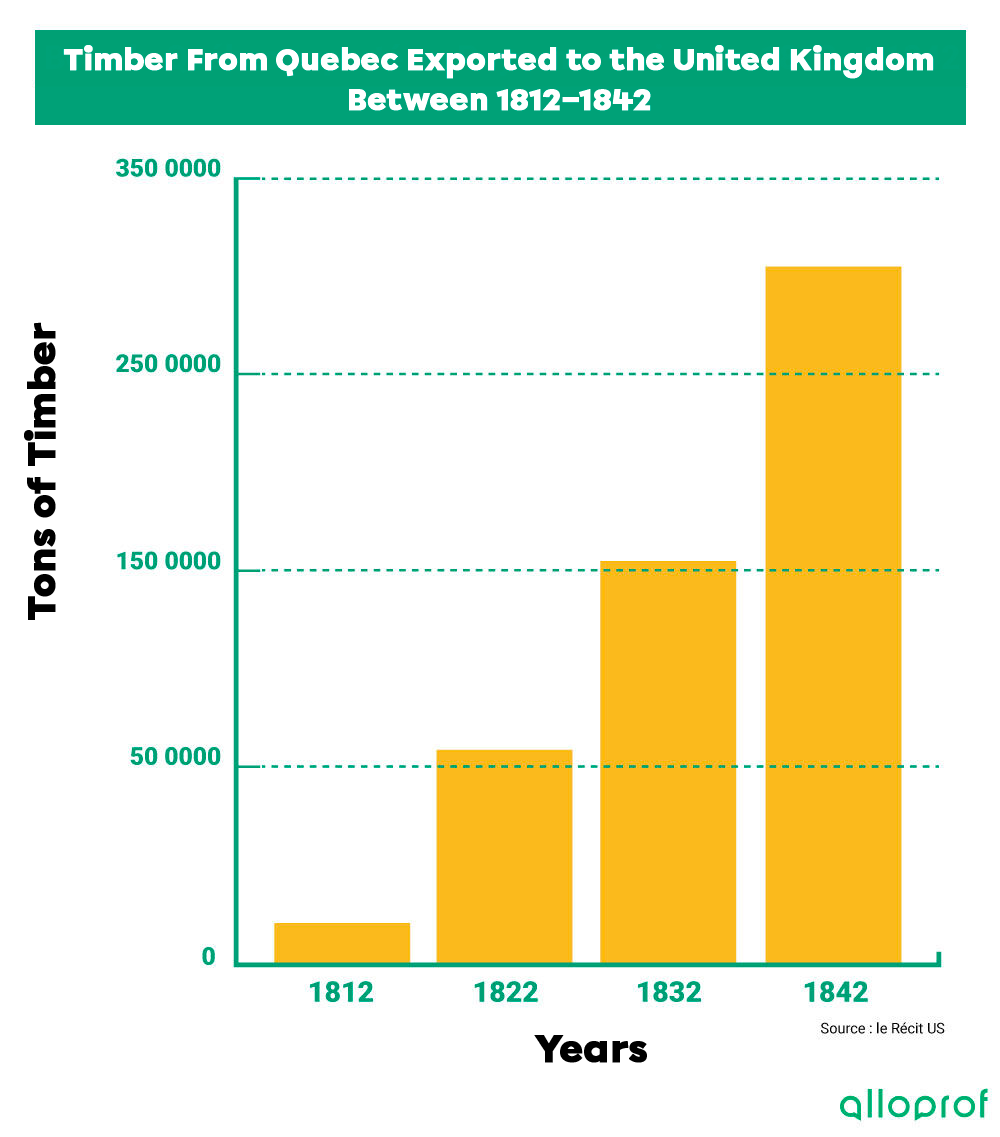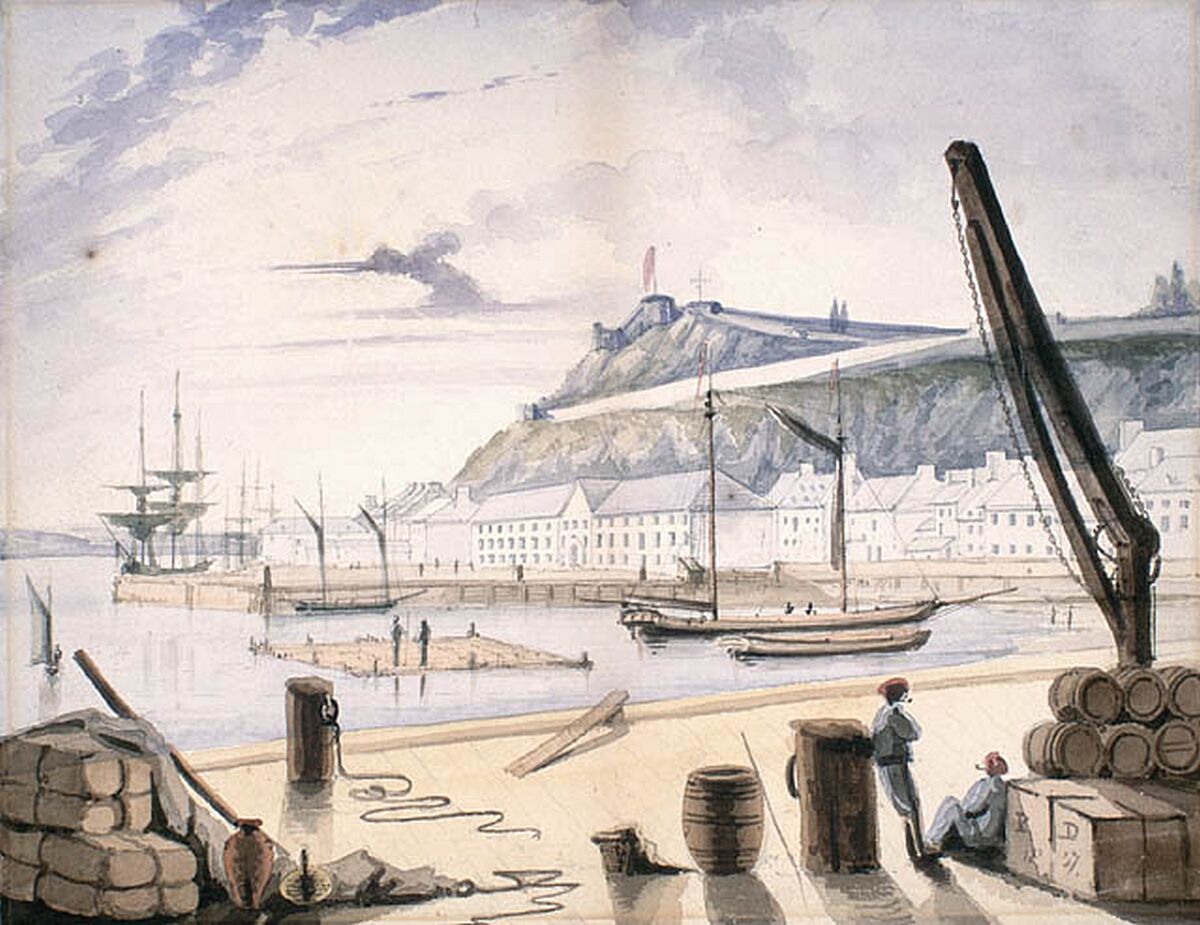Napoleon’s Continental Blockade forced the United Kingdom to source timber from Lower Canada. The timber trade allowed several regions to grow, and many jobs were created to meet the high demand. Thanks to preferential tariffs, timber became the largest export to the United Kingdom.
Preferential tariffs are customs duties that were applied at a lower rate for products imported from the colonies. In this case, there were fewer taxes on timber from Lower Canada than timber from other European countries, because Great Britain wanted to boost the economies of its colonies.

The Act of Union led to political, administrative and territorial changes in the new United Canada. In addition to this constitution, the reforms coming from the United Kingdom often had a big impact on the colonies, including the Province of Canada.
Early in the 19th century, the United Kingdom practised protectionism to allow its colonies to develop.
Protectionism is an economic measure designed to protect the economy of a colony or a country from competing countries.
The mother country implemented its protectionist measures by increasing the cost of the customs duties on resources imported from countries other than its own colonies. Purchasers in the mother country were then more inclined to buy resources from the colonies because they were less expensive, which eliminated competition from the more expensive outside sources. This measure stimulated the wheat and timber trade in Upper and Lower Canada from 1815 to 1846.
A wave of new ideas arrived in the United Kingdom in the early 1840s. The British parliament adopted several economic reforms. Economic liberalism and free trade took over as the economic model and replaced protectionism.
Economic liberalism is based on a belief that the government must intervene as little as possible in the economy and trade. Free trade is a measure that abolishes anything that hinders trade, such as custom tariffs. Economic liberalism is therefore the opposite of protectionism.
By eliminating its protectionist measures, the British Crown created competition between United Canada and other countries that wanted to trade with the United Kingdom. The Corn Laws were also abolished. These laws were designed to offer better prices on cereals to encourage people to purchase this resource from within the British Empire. These reforms meant the Empire was no longer supporting its colonies.
The timber trade was still growing in the 1840s, and merchants in the United Kingdom were the main investors. The timber industry needed a lot of labourers for jobs from logging to processing timber in sawmills. There were thousands of sawmills in Lower Canada and Upper Canada at this time, allowing agricultural workers to work in this industry in the winter when farming was impossible due to the climate.
The timber industry would allow the regions of Mauricie, Ottawa and the Saguenay to grow. Many sawmills opened in these regions. To transport the wood easily, these sawmills were located near waterways, like the Saint-Maurice River in Mauricie.
SOM: Saguenay, Ottawa and Mauricie.
As for Quebec, the timber industry made it possible to build many ships, primarily for export to the United Kingdom. During the 1840s, the Port of Quebec became one of the biggest ports in the world.
